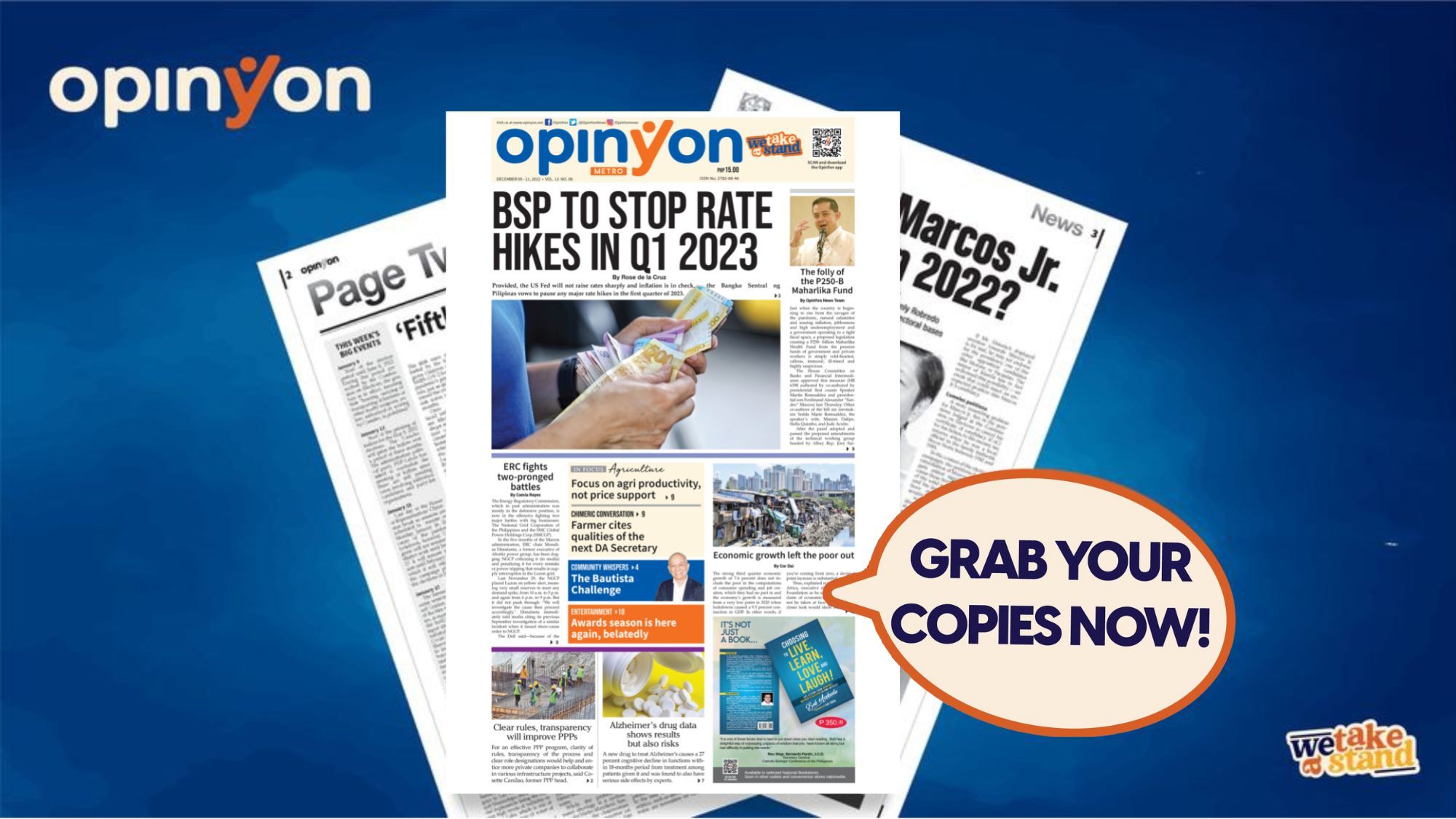Barring any major shocks, the Bangko Sentral ng Pilipinas promised to pause/halt any major interest rate hikes in the first quarter of 2023. It had raised policy rates six times this year to 5 percent to contain inflation, running near 14-year highs and to support the peso which had dived sharply against the dollar because of the aggressive US monetary tightening.
Since May, the BSP has raised borrowing costs by 300 basis points (bps), bringing the benchmark rate to a 14-year high of 5 percent. BSP is expected to increase policy rate by 50-bp on Dec. 15.
BSP projected November inflation to be in the range of 7.4 to 8.2 percent because of upward pressures from electricity and agricultural products. Inflation in October hit its highest in nearly 14 years at 7.7 percent but is expected to decline in the coming months as cost-push shocks dissipate, reported Business Mirror.
BSP Governor Felipe Medalla’s “base case scenario” is that the Federal Reserve will pause policy tightening in the first quarter of 2023, easing pressure on the BSP to match its policy actions. The Fed has raised borrowing costs faster this year than at any time since the early 1980s, using jumps of 75-basis-points at each of the last four meetings to bring the policy rate to its current 3.75 percent-4 percent range.
Fed policymakers have signaled they may move more slowly starting at their meeting next month, even as Fed chair Jerome Powell have hinted that interest rates may ultimately need to go higher.
Medalla said the central bank has room to respond to any Fed move either “fully or partially,” depending on data. The central bank, which meets every six weeks, will meet for the last time this year on December 15.
IMF to BSP: be more aggressive
The International Monetary Fund recently concluded its 2022 Consultation with the Philippines, where it noted that should inflation worsen, they would tell BSP to respond with a tighter monetary policy stance.
Inflation in the Philippines, IMF said, is being fueled by the strong dollar, higher commodity prices, and tightening global financial conditions. IMF said high inflation has weakened the country’s external position and narrowed its fiscal space.
“The current policy stance remains accommodative, and BSP should aim at bringing the policy rate close to the neutral real rate to securely bring inflation within the target range,” it explained.
But if inflation becomes less persistent, the BSP should also recalibrate its monetary policy tightening.
“Monetary policy should be the first line of defense against persistent inflationary pressures,” IMF said.
“The use of FXI [foreign exchange intervention] can mitigate a sharp and disorderly exchange rate depreciation, alleviate inflation, and reduce some of the pressure on monetary policy.”
The IMF expects consumer prices to average 5.3 percent this year; 4.3 percent next year; and 3.1 percent in 2024.
It estimates growth to slow to 5 percent in 2023 from 6.5 percent in 2022. Medium-term economic growth is forecast at about 6.3 percent.
“With a difficult global environment weighing heavily on the economy, the economic outlook is subject to significant downside risks, where policy tradeoffs between supporting output on the one hand and reducing inflation and safeguarding the external position on the other, would become more acute,” IMF said.
S&P ups growth forecast
S&P Global Ratings revised its Philippine growth forecast upwards to 7.1 percent this year but sees slower growth in 2023 due to the impact of higher interest rates and elevated inflation.
S&P cut 2023’s GDP growth projection to 5.2 percent from 5.7 percent, or below the government’s 6.5-8 percent growth goal for 2023, Business World said.
It said strong consumption in economies like the Philippines will lift the average Asia-Pacific regional growth next year.
The Philippine economy grew by 7.6 percent in the third quarter, faster than the revised 7.5 percent in the second quarter. Average growth in the first nine months stood at 7.7 percent, still above the government’s 6.5-7.5 percent full-year target.
S&P also said domestic demand recovery would boost growth in the Philippines next year.
“Improving inbound tourism should support growth in (Malaysia, the Philippines, Thailand) and Japan, although the resumption of Chinese tourist arrivals will likely not happen before late 2023.”
S&P expects Philippine inflation to average 5.5 percent this year and 4.3 percent in 2023, still above the BSP’s 2-4 percent target. It sees inflation easing to 2.7 percent in 2024.
S&P said it expects the BSP policy rate to reach 5.5% this year, indicating a 50-bp rate hike at its December meeting. The BSP is seen to maintain the benchmark rate next year, before cutting it to 4% in 2024.
